PROBES IN A RADIANT FLOOR SYSTEM
Should the floor probes be installed before or after pouring concrete?
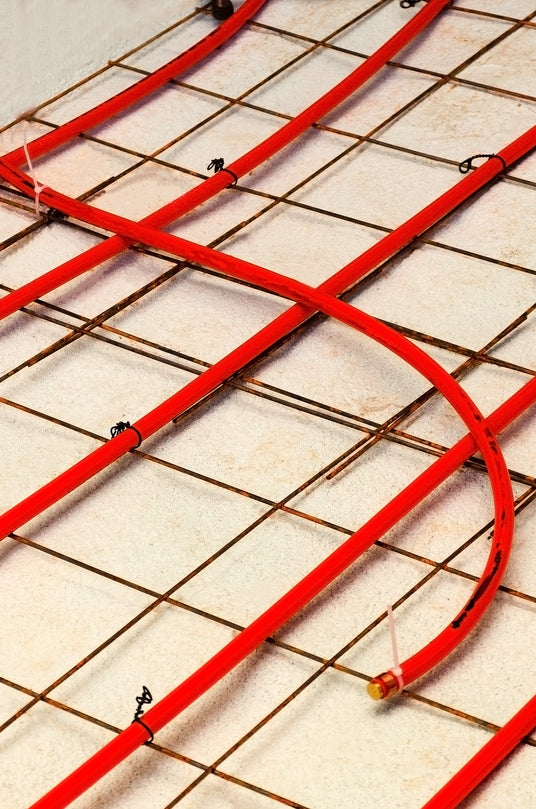
We recommend against sinking the probes directly into the concrete to avoid damaging them. However, it is possible to install them after the concrete is poured with proper preparation.
To prepare for the installation of your probes (after the PEX piping circuits are installed), follow these steps:
- Lay scraps of pipe with one end plugged. The plugged end should be positioned on the ground, centered between two pipes, while the other end should extend to where the smart thermostat will be installed.
- Insert the floor probe into the pipes. To ensure that the probe reaches the end of the pipe, secure the probe using tape on a pin roller. This will make it easier to push the probe through the pipe.
- It is not necessary for the probe wire to be located in the exact center of the room. However, please note that the probe wire we sell is 15 feet long, so it is advisable to keep it relatively close to the thermostat.
Note: The thermostat is typically positioned 5 feet above the floor."
How many probes are needed for a radiant heating system?
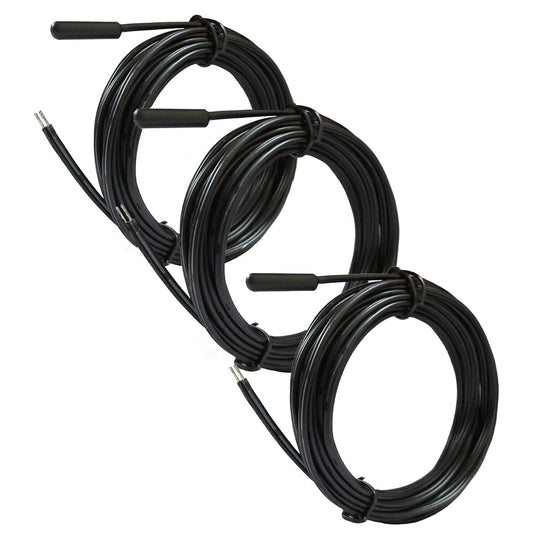
We recommend installing one probe per thermostat, situated where the pipes will be cast in concrete.
If your radiant floor system is made without concrete (with pipes running between the joists), operating the thermostats in floor mode won’t be an option.
What is the advantage of having floor sensors (probes)?
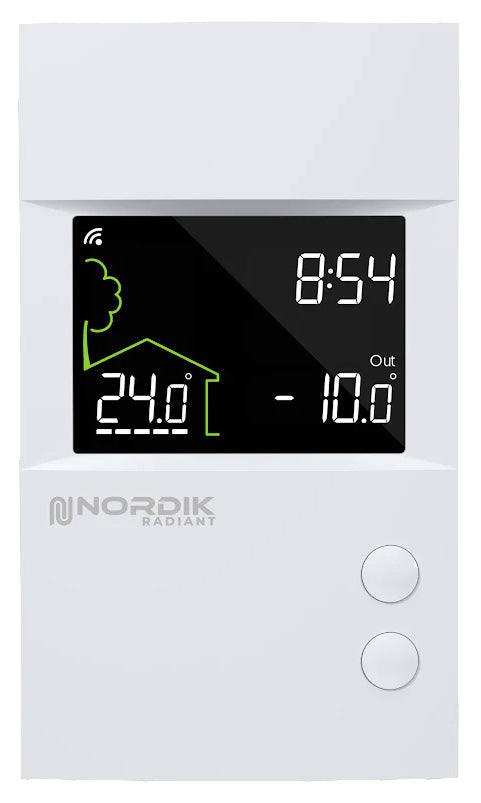
Temperature sensing in the concrete provides an additional method for a smart thermostat to measure the room's temperature. By offering two different ways to calculate the temperature (air and slab), the smart thermostat provides two distinct modes: slab-focused temperature control and air-focused temperature control. Each mode prioritizes a specific aspect.
In the slab-focused mode, the thermostat primarily cares about the temperature of the room's slab. This mode is useful in maintaining a specific slab temperature, such as in a bathroom. For example, if the heating system is set to maintain the ambient air temperature at 23°C, the bathroom slab may remain cold since the heating system avoids surpassing the set temperature. By setting the thermostat to the slab mode, the concrete will heat itself and maintain a consistent temperature of 23°C, regardless of the air temperature. This ensures that your feet won't feel cold after showering, which is one of the many aspects loved by our customers who now live the radiant heating system experience.
Another practical application of setting the temperature to the slab mode is in a garage. Garages often experience temperature changes when the doors are opened to the outside cold. By setting the smart thermostat to focus on the slab temperature rather than the ambient air, the in-floor heating system won't respond dramatically to the air temperature fluctuations. Instead, the slab will gradually heat the air over time, maintaining its original temperature.
In summary, having the option to choose between slab-focused and air-focused temperature control modes provides flexibility in different scenarios, allowing for customized comfort and temperature management based on specific needs.
What are the differences between a floor and outdoor probe?
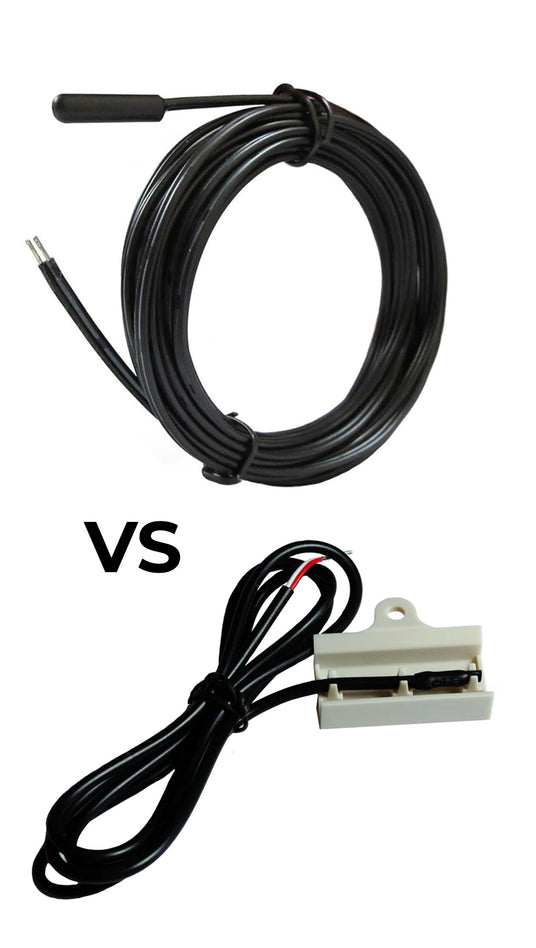
Floor probes are connected to a smart thermostat and measure the temperature of a room's concrete. Depending on the selected mode, the smart thermostat adjusts the temperature of the concrete accordingly.
On the other hand, the outdoor sensor is connected to the electric boiler. This sensor monitors the temperature outside and helps the boiler determine the appropriate temperature at which the liquid should circulate in the pipes. When it's colder outside, the liquid will be heated to a higher temperature, and when the temperature outside is milder, the liquid will be cooled. This allows the in-floor heating system to effectively control and maintain the desired temperature of the concrete slab.
Where should we install the outdoor probe?
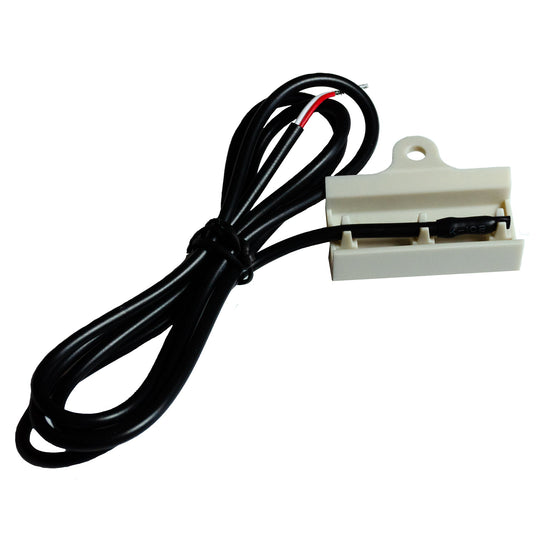
The outdoor probe is installed on the exterior of the building, in a location that best represents the outdoor environment (usually on a north-facing wall or a south wall when the building has large windows facing the south).
Note: It is important the sensor is not exposed to external heat sources such as dry outlets, window openings, or uninsulated walls.
In addition, the probe must not be installed in a place where it could be covered in snow. The outdoor probe's cable is not very long, so to get to the boiler, it must be extended on a 2-strand wire. (For cable size and/or maximum length, please refer to the manufacturer’s manual).
Is the outdoor probe mandatory?

No. The external probe allows the boiler to decide the optimal temperature for the liquid at which it will circulate in the piping, but it is not mandatory. When plugged in, the liquid temperature will vary depending on how cold it is outside. If it is not plugged in, the system will still operate, but the fluid temperature will drop.
